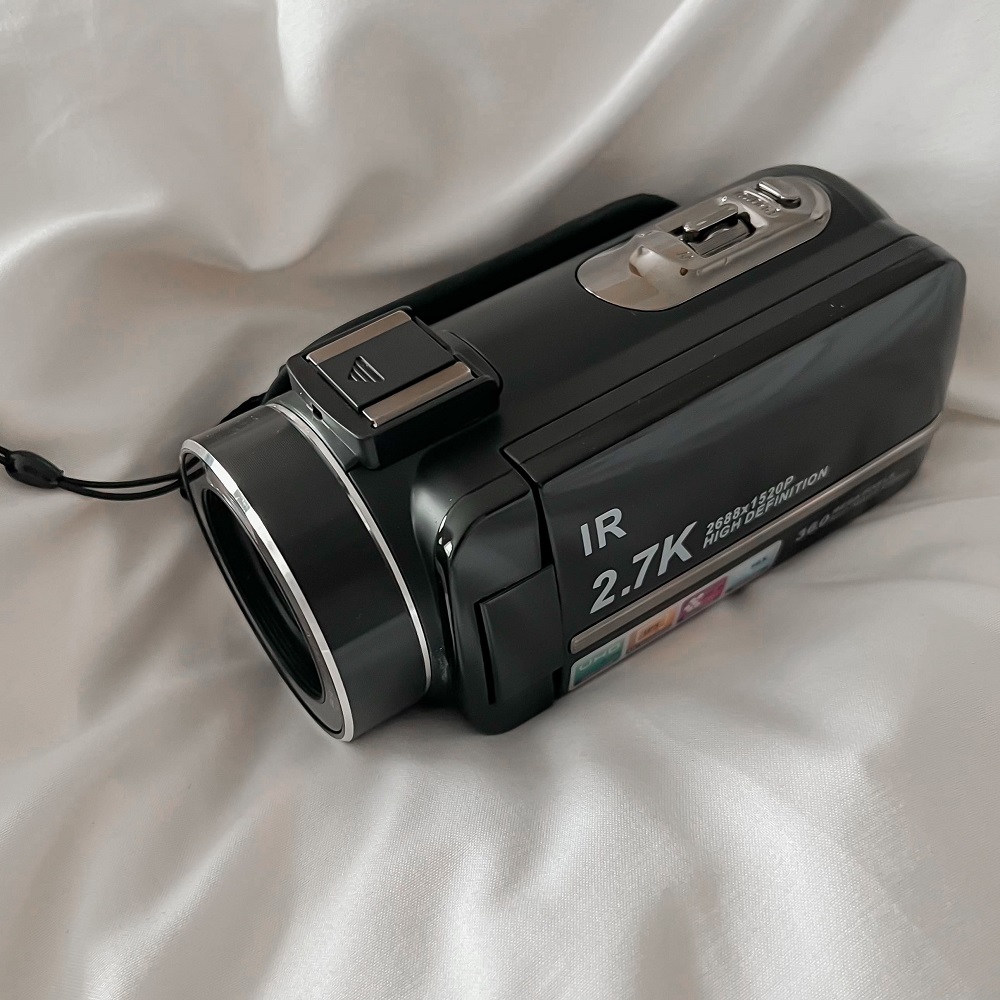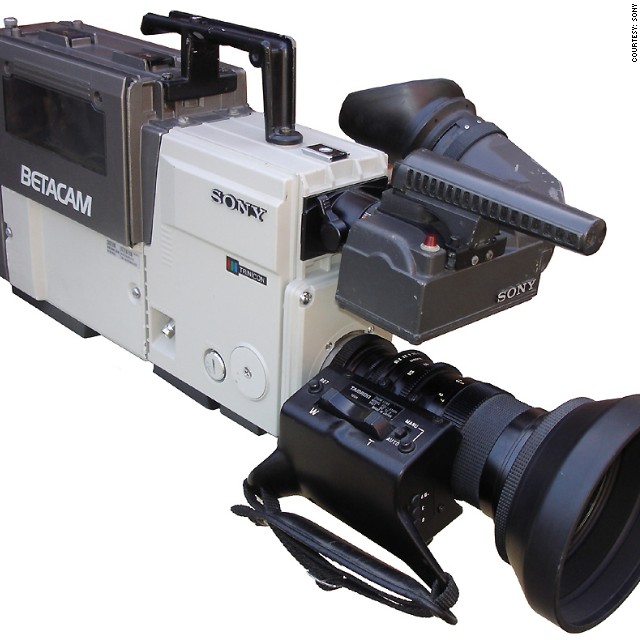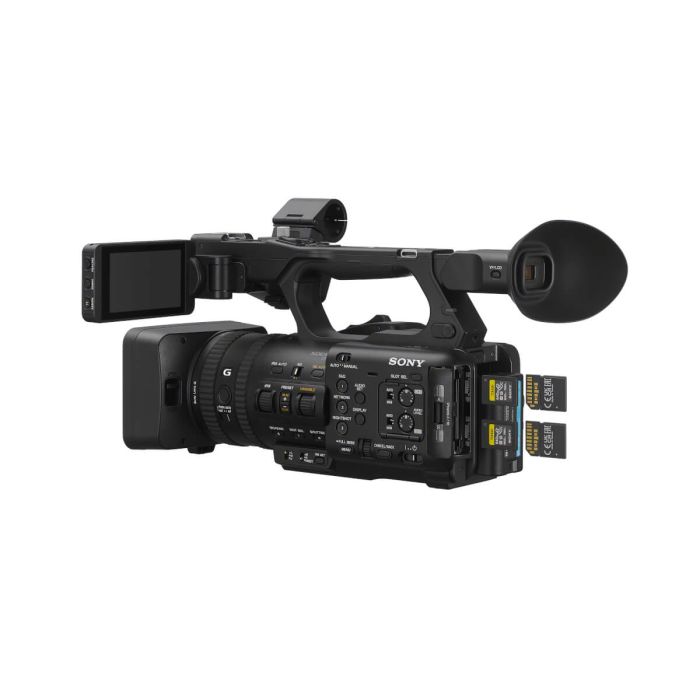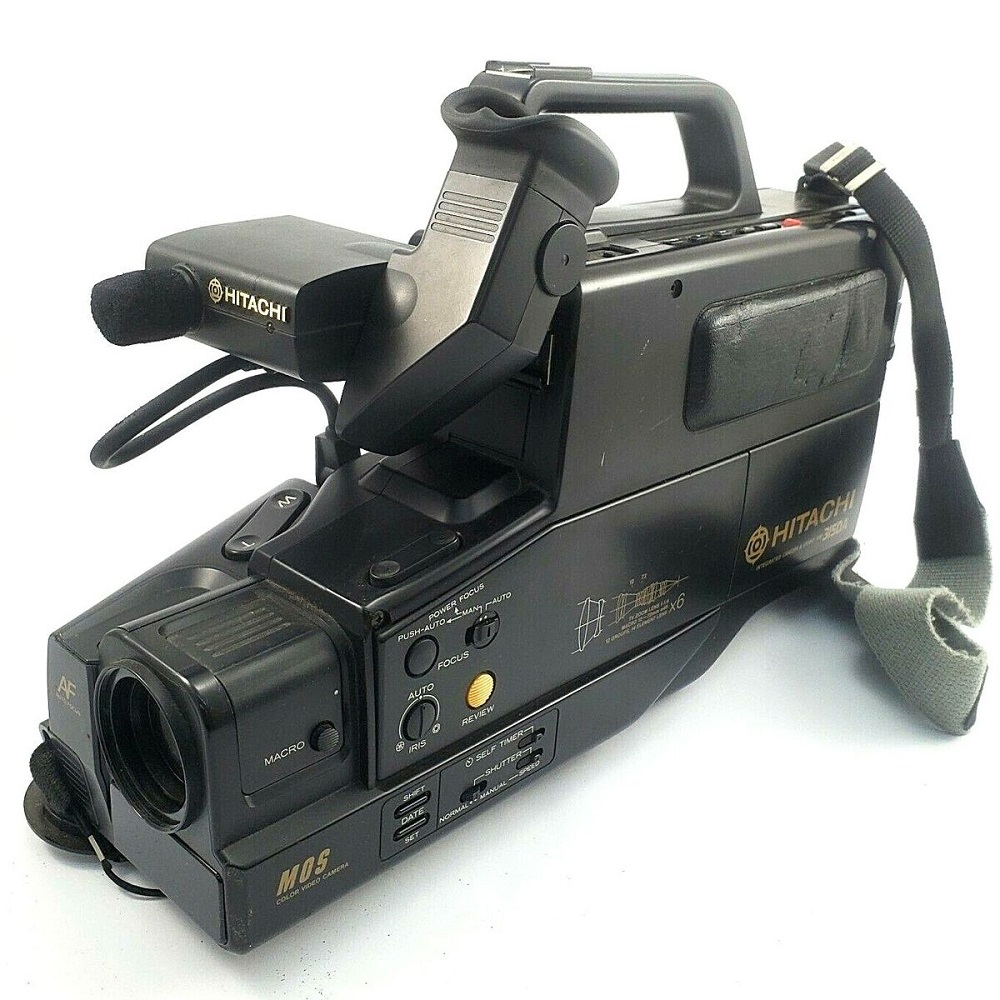The Dawn of Portable Video Recording
The Inception and Rejection of the Camcorder Concept
In the early stages of video recording, the concept of a handheld device was met with skepticism. Jerome H. Lemelson, one of the inventors behind the camcorder, found his initial patent application rejected in 1977. Critics deemed a portable video recorder too far-fetched to become a reality. Yet, the resilience of inventors and advancing technology soon turned the tide. By overcoming the odds, these pioneers set the stage for a revolution in personal video recording—and, indeed, personal history documentation.
JVC’s Introduction of the Mini-VHS Format
In the wake of skepticism, JVC broke new ground with its release of the mini-VHS format in 1982. The birth of the ‘CAMera/recorder’ or ‘camcorder’ marked a huge step forward for video technology. With this innovation, JVC catered to consumers yearning to capture life’s moments without cumbersome equipment. The mini-VHS format was a landmark because it was tailored for handheld use, offering convenience and simplicity to the general public. This product release can be seen as the beginning of the 1980s camcorder era, inviting a broader range of people to partake in video recording.

The Technology Leap with Sony’s Betacam System
Betacam: Setting a Professional Standard in Video Quality
Sony introduced its Betacam system just months after JVC released its mini-VHS format. Betacam was revolutionary, marketed with the catchy phrase, ‘Inside This Camera Is a VCR’. This apt description highlighted the integration of both camera and recorder into a single unit. This innovation allowed for greater mobility and ease of use, making it an instant hit among professionals. The Betacam series dramatically improved the filming process, significantly cutting down on bulk and extraneous equipment.
The Betamax vs VHS Format War
As the 1980s camcorder wars intensified, two major formats emerged: Betamax, introduced by Sony, and VHS by JVC. Initially, Betamax was known for better video quality, commanding respect from high-end users and professionals. However, VHS would soon dominate thanks to its longer recording time and cheaper production costs. Both formats had their loyalists, but VHS eventually won the lion’s share of the marketplace, primarily due to market strategy and consumer preference for longer recording capacity.
Broadening the Market with the Entry of Major Camera Companies
As the 1980s camcorder market heated up, major camera companies saw a golden opportunity. Names like Kodak, Panasonic, RCA, and Hitachi joined the fray, broadening the market and introducing more competition and innovation.
Kodak and the KODAVISION Series
In 1984, Kodak stepped firmly into the camcorder arena with the launch of the KODAVISION Series 2000. This 8 mm video system marked Kodak’s bold entry into video technology. They didn’t stop there; Kodak also introduced Videotape Cassettes in varying formats: 8 mm, Beta, and VHS. This move helped Kodak secure a significant share of the flourishing camcorder market, appealing to consumers eager for more recording options.
Panasonic, RCA, and Hitachi’s Contributions
The following year, Panasonic, RCA, and Hitachi made their entries, each offering camcorders that recorded to full-sized VHS cassettes. These models boasted up to 3 hours of recording time, a feature that was highly attractive to users who needed more recording capacity without frequent tape changes. Each company brought its unique innovations to the table, suggesting a thriving competitive spirit that pushed the boundaries of what camcorders could achieve in the consumer electronics market.

Advancements in Video Tape Formats
The Emergence of VHS-C
The 1980s camcorder wave brought novel tape formats. VHS-C stood as a compact version of the VHS tape. Created by JVC, it became a crowd favorite for its small size. This smaller cassette fit into camcorders easily, making recording more convenient. Users loved popping VHS-C into an adapter to play on VCRs. It was a clever design, shrinking the bulky VHS without losing quality.
Video8 and the Chip-Based Revolution
Sony sparked a revolution with Video8 in 1985. This format leveraged chip technology in camcorders. The chip-based design allowed for better video and audio quality on standard 8mm tape. Video8 was a hallmark in camcorder development. It offered improved visuals and a smaller form factor, setting a new precedent.
Super VHS and Broadcast-Quality Footage
Super VHS launched camcorder quality forward. Released in 1987, it surpassed traditional VHS in picture quality. Dubbed S-VHS, it delivered near-broadcast-level visuals. This made it a favorite for both professionals and enthusiasts alike. The tapes maintained VHS size but held superior tech inside. They allowed creators to capture clearer, more detailed footage, feeding a growing demand for high-quality home videos.
Compact and Digital Innovations
Sony’s Digital Video Format D1
In 1986, Sony unveiled its groundbreaking digital video format, D1. D1 was the first digital video format that recorded video uncompressed. This meant a much higher video quality but at the cost of requiring more storage space. Unlike previous analog systems, D1 didn’t compress video data, preserving the highest possible quality. Its introduction was a significant step into the digital age, offering professionals a new level of clarity and detail in their recordings.
While it was a marvel of technology, D1’s high demand for bandwidth meant it was mainly used in professional settings. This format set the stage for future developments in digital recording. It was a clear sign that the era of analog camcorders was coming to an end, as the world began to embrace the digital revolution.
The Game-Changing Sony Handycam
In 1989, Sony changed the game again with the introduction of the Sony Handycam. This compact device weighed a mere 790 grams, which was incredibly light for the time. Sony marketed it under the slogan ‘Passport Size’, highlighting its convenience and portability. The Handycam was one of the first camcorders to really capture the consumer market, offering the ability to record on-the-go without the bulk of previous models.
The Handycam offered video enthusiasts a manageable and easy-to-use option for capturing life’s moments. Its lightweight design and user-friendly features took home recording to new heights and made it accessible to the masses. The Handycam quickly became synonymous with personal video recording in the 1980s, embodying the camcorder’s transition from a professional tool to a household staple.
As Sony continued to innovate, the 1980s camcorder became more than just a recording device; it became a cultural icon that redefined how we capture and share our personal stories.

The Camcorder’s Impact on Culture and Society
The 1980s camcorder did more than record videos; it reshaped culture. Its portability and ease of use allowed everyday moments to become entertainment and historical records. The camcorder captured life’s unpredictable, funny, and touching moments, creating a new wave of shared experiences.
Reality TV and the ‘America’s Funniest Home Videos’ Phenomenon
The camcorder sparked a reality TV craze. Shows like ‘America’s Funniest Home Videos’ thrived on home-recorded content. Viewers sent in countless clips, eager to share their humorous moments. This show, fueled by camcorder footage, became a hit, making video stars of regular people. The laughter it brought into homes was genuine, spontaneous, and camcorder-captured.
The Camcorder as a Tool for Citizen Journalism
Camcorders also turned citizens into journalists. When unexpected events unfolded, people with camcorders documented them. This firsthand footage often reached news outlets, influencing public awareness and sometimes swaying opinions. Events like the Rodney King incident showcased the camcorder’s power to capture critical moments, altering the course of social discourse. Citizen journalism, enabled by the 1980s camcorder, emphasized the importance of accessible recording technology in society.
